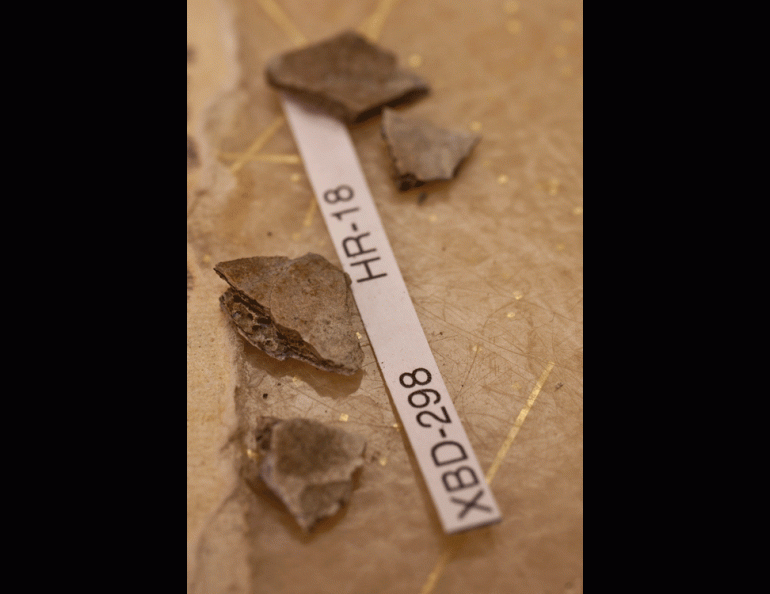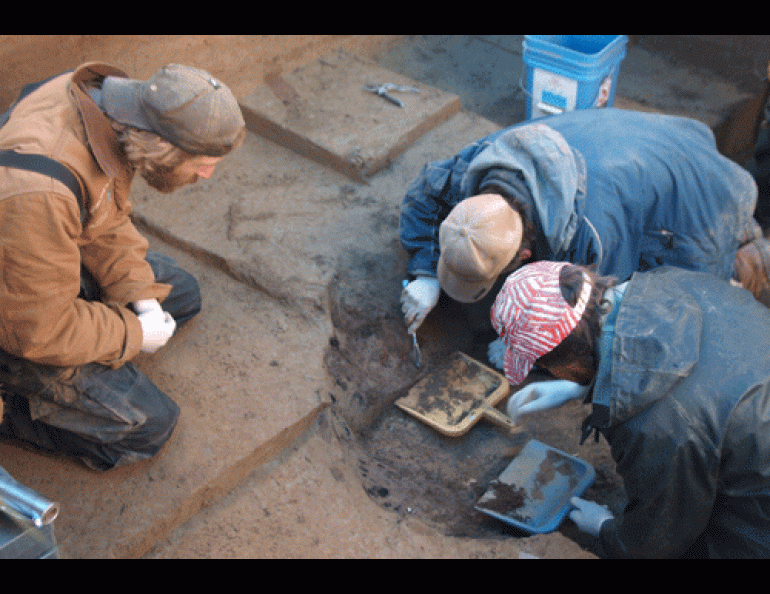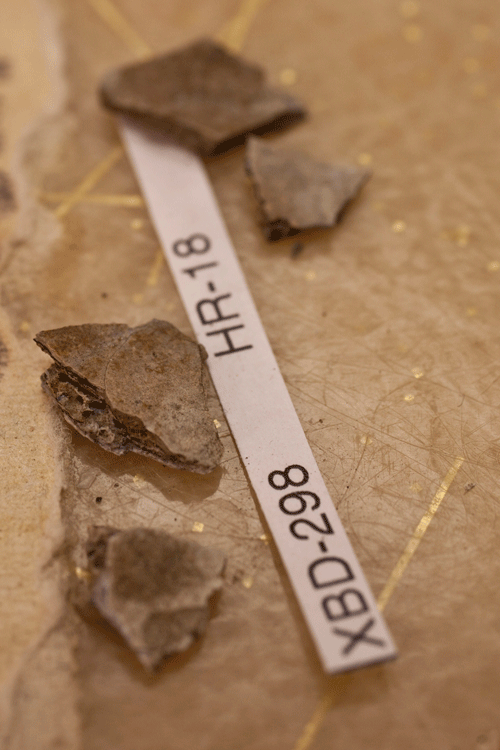

Alaska dune yields oldest human remains of far north
Last summer, archaeologist Ben Potter was supervising a group of researchers digging on an ancient sand dune above the Tanana River. Potter, who had a field camp he needed to start at another site, was anxious to get through the last day of work at the dune.
Two graduate students, Patrick Hall and Jill Baxter-McIntosh, were slowly moving earth with metal trowels in a layer of charcoal that suggested an ancient fire pit. Potter worked his way over to help and began exposing bone fragments that were different from the bones of fish and small mammals the students had found embedded throughout the site.
The University of Alaska Fairbanks researcher recognized parts of a skull from a large mammal — possibly human — though he knew the chances of that were astronomically low. Potter scraped the soil with the blade of his trowel. He heard a click. As he blew away tan silt as fine as flour, there was a human molar.
“Everybody stop!” he said to the others digging at the site.
Because he knew that artifacts found at the level of the tooth were about 11,500-years-old, Potter suddenly realized he was in the midst of an archaeologist’s dream — he and his team had unearthed the oldest human remains found in the far north.
“That was quite an amazing feeling, holding the molar in my hand,” Potter said.
He called over Josh Reuther, a graduate student from the University of Arizona who had also logged many hours at the site. He showed Reuther the tooth without saying a word.
“We knew the significance right away,” Potter said.
As that summer day was the last day of the dig, the archeologists backfilled much of the site with soil, working until 5 a.m. They caught their scheduled helicopter ride out a few hours later, each of them a bit less tired than they might have been without the discovery.
Potter and his coworkers returned to the site to continue excavating after getting a blessing to continue from interested officials at both the Healy Lake Traditional Council, the local tribe recognized by the federal government, and the Tanana Chiefs Conference in Fairbanks.
Potter and his team, which included Joel Irish and Carol Gelvin-Reymiller of UAF and Reuther and Vance Holliday of the University of Arizona, excavated the partially cremated bones of a three-year-old child who was alive before spruce trees crept into Alaska, at a time when the rising ocean was flooding the Bering Land Bridge.
Along with the child, they also found evidence of something that may prove just as significant — the oldest known human dwelling in northern North America. It was circular, at least six feet in diameter, with a fire pit in the middle. Potter thinks it was the right size for a nuclear family that subsisted at least during summer on salmon, ground squirrels and ptarmigan.
“This is an important discovery,” said James Dixon, director of the University of New Mexico’s Maxwell Museum of Anthropology and author of the book, “Bones, Boats and Bison.” “The human remains are well dated, and are the oldest yet discovered in Alaska and Canada. (And it’s) wonderful to see the cooperation between Tanana Chiefs Conference and the University of Alaska.”
The child, aged from its tooth development by UAF’s Irish, lived at the end of the last great Ice Age. The find is at what archaeologists call the Upward Sun River site or “Xaasaa Na’,”the spot’s name according to a Native woman who lived in Salchaket village and who passed the name on to an anthropologist in the 1960s. The site is near a major drainage that flows into the Tanana River between Delta Junction and Fairbanks.
Crews working for Northern Land Use Research, an archeology-consulting firm, discovered the site in 2006. Potter and Pete Bowers of Northern Land Use Research were supervising the work under contract to the Surface Transportation Board. This survey, required by law, was to identify and protect archaeological remains that might be disturbed by the proposed Alaska Railroad extension to Delta Junction.
The skeletal fragments of the three-year-old were cremated in the dwelling’s cook pit. The people who lived there then covered the pit with earth and abandoned the site, Potter said.
“A cremated child burial within a house floor pit fits a pattern known for other northern Eurasian Upper Paleolithic sites,” said David Yesner of the University of Alaska Anchorage, a professor who has done a lot of work in the area, much of it at the nearby Broken Mammoth site. “Perhaps more importantly for contemporary Athabascan peoples of interior Alaska who practiced cremation burials in pre-European contact times, it suggests some additional possibility of cultural, if not biological, linkages to the ancient past.”
Potter and his colleagues have submitted bone samples for both isotopic testing (which will help reveal what the child was eating) and DNA testing (which, if the bones can yield it, might reveal how closely related the child was to Natives of the area today).
The 11,500-year-old bones and teeth are the first remnants of ancient man found in Alaska since 1996, when University of South Dakota researcher Tim Heaton found the bones of a man dated to about 10,500 years ago in a limestone cave on Prince of Wales Island. The skeletal remains of “Kennewick Man,” found in southern Washington, have been dated to about 9,300 years ago.
The discovery of the dwelling and the cremated child were both finds that have eluded Alaska archaeologists since William Healy Dall searched for signs of ancient people in Alaska about 150 years ago. Potter is now comparing Upward Sun River with a site in Russia, near Ushki Lake on the Kamchatka Peninsula, which is of a similar date and also features house pits and buried human bones.
“The residential behaviors inferred here are ones we've never seen before,” Potter said. “The comparisons with Ushki suggest similar land use strategies (between today’s Alaska and Siberia) at the time when Asia and North America were separated by rising sea levels.”






